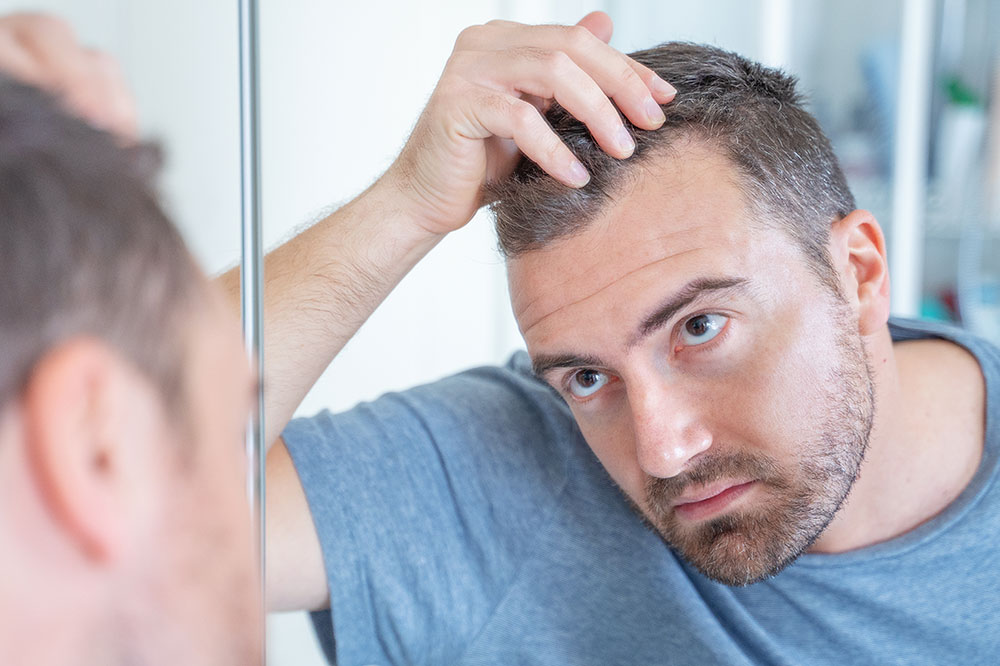
A handy guide on scalp psoriasis
Scalp psoriasis is a common skin disorder that results in scaly, reddish patches on the skin. It can appear as a single patch or as several around the hairline, forehead, neck, or behind the ears. In some cases, it can be mild and unnoticeable, while in others, it can last for a long time. In addition, it is important to note that the condition itself may not cause hair loss, but scratching hard, stressing over it, and using harsh treatments can lead to temporary hair loss.
Causes
Experts aren’t sure about the exact cause behind the development of this condition. It can happen when a person’s immune system fails to function properly. A person with scalp psoriasis is likely to produce more of certain types of white blood cells, called T cells. The job of these cells is to travel throughout the body and fight off viruses, but when a person’s body produces too many of these cells, they begin to attack healthy cells and produce more skin cells. These cells then appear on your skin, where they cause inflammation, redness, patches, and flaking. Besides this, family history, obesity, smoking, stress, and viral infection can be other potential causes of this disease.
Symptoms
The symptoms of scalp psoriasis can vary depending on its severity. Mild psoriasis only results in fine scaling, whereas moderate to severe form can cause the following symptoms.
- Dry scalp
- Scaly, red, bumpy patches
- Silvery-white scales
- Burning or soreness
- Hair loss
- Dandruff-like flaking
Diagnosis
Doctors first conduct a physical examination of the scalp to diagnose psoriasis. They may also ask about family history and other health conditions. In addition, in some rare cases, doctors even do a skin biopsy. During the biopsy, a small sample of skin is taken from the head and then sent to the lab for further testing.
Treatment
While there is no sure-shot cure for scalp psoriasis, there are several treatment options that can prevent severe symptoms such as hair loss and chronic inflammation. A doctor may combine multiple treatment options, depending on the severity of the disease.
- Anthralin – It is a cream applied to the scalp for a few minutes or hours to reduce inflammation.
- Calcipotriene – Available as a cream, ointment, and solution, calcipotriene contains vitamin D that helps in changing the way skin grows in certain parts of the body.
- Tazarotene – This is a gel that is applied to the scalp to reduce redness and inflammation associated with scalp psoriasis.
- Methotrexate – Methotrexate is an oral medication that can stop the skin cells from overgrowing.
- Biologics – Biologics are injectable injections that are made from natural substances, which control the body’s immune response. They can reduce inflammation and redness caused by psoriasis.
- Ultraviolet light therapy – Light therapy includes exposing the affected area to ultraviolet light. One may also experience relief by going out in the sun, but that can increase their chances of developing skin cancer.
Natural remedies
Along with treatment prescribed by the doctor, one can also try various natural remedies to reduce and alleviate the symptoms. These include applying aloe vera cream, apple cider vinegar solution, coconut oil, tea tree oil, and avocado oil.
Foods to consume
In addition, one should include leafy greens, fruits, fatty fish, flaxseeds, and walnuts to reduce inflammation and dryness.
Preventive measures
People with scalp psoriasis must avoid injuries, consume vitamin D, and reduce stress to prevent psoriasis flare-ups.
Scalp psoriasis is an autoimmune condition that may come and go. There is no proper cure, but one can timely get it diagnosed, use different treatments, and make a few lifestyle changes to prevent the disease from worsening.




